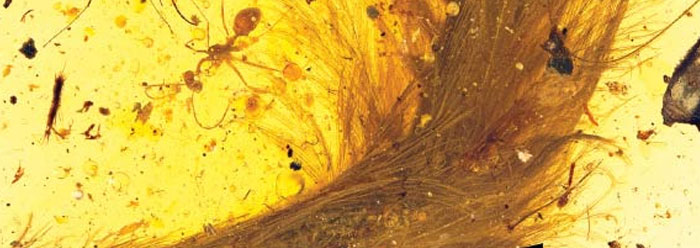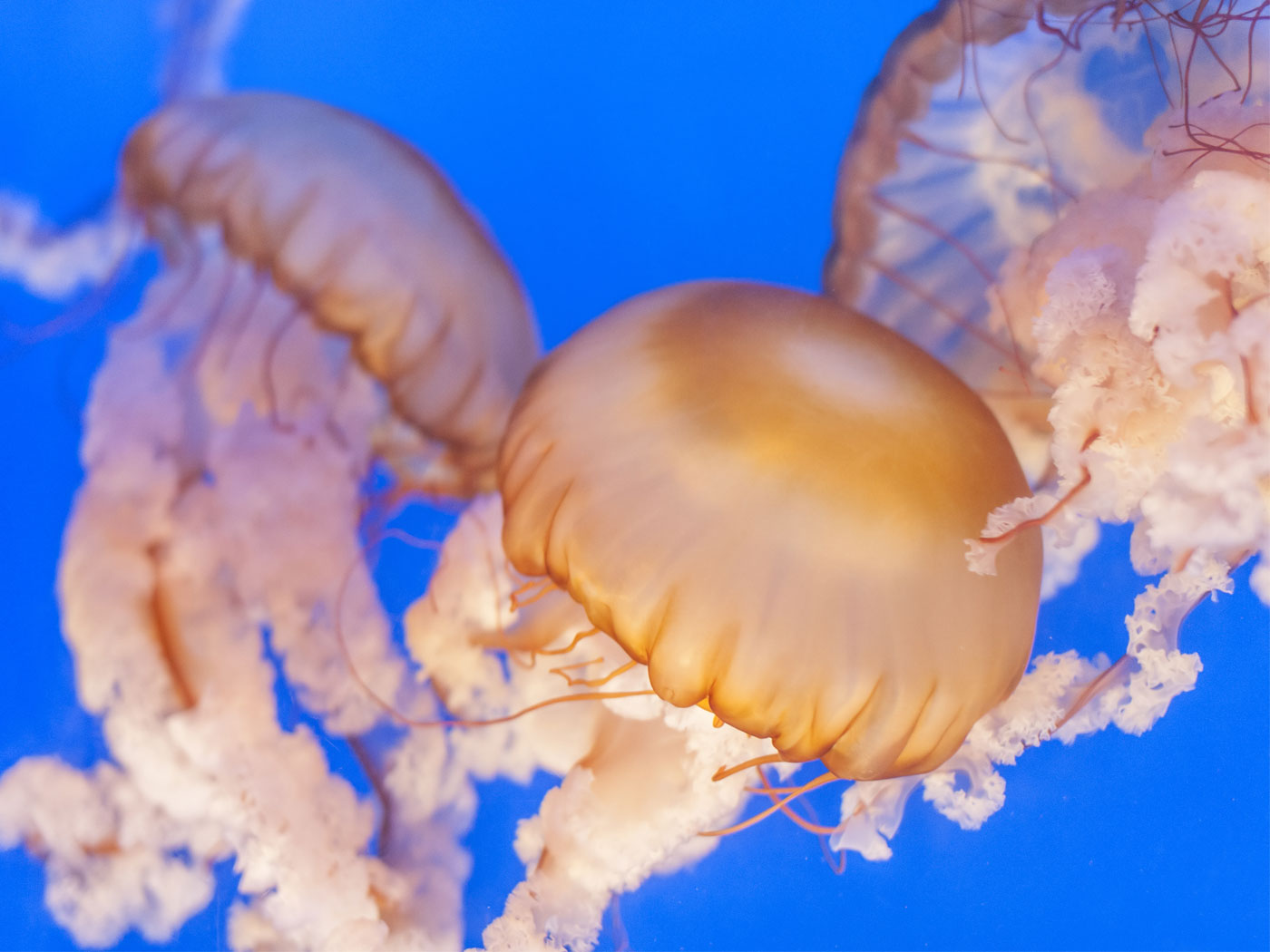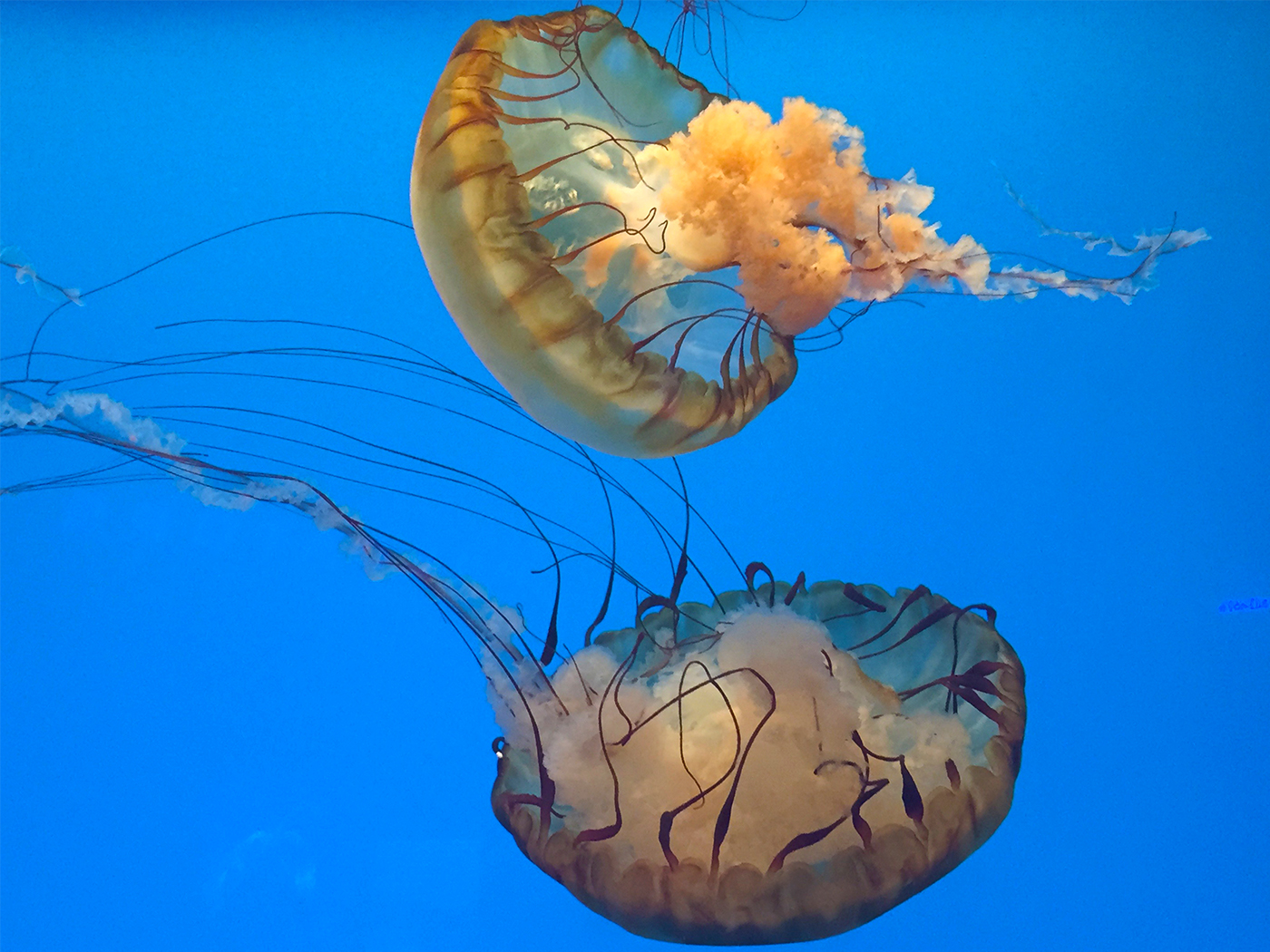On December 8, 2016, a science news story broke that researchers had found entombed in mid-Cretaceous amber a dinosaur tail complete with "primitive plumage"—i.e., feathers.1
This is exciting for evolutionists because evolutionary theory posits that birds have an ancient theropod ancestor. Through time and chance, the front legs of that small, heavy-tailed, bipedal dinosaur supposedly "turned into" efficient, aerodynamic wings, and the creature somehow sprouted flight feathers in all their complexity. Unfortunately, the scientific case for reptilian scales "turning into" feathers has yet to be made.
National Geographic characteristically and enthusiastically crowed of this recent discovery: "To scientists’ delight, the incredible appendage from 99 million years ago is covered in feathers."2 Such celebration is premature, however, as the following observations show.
What was the original source of this small, incomplete sample? It was bought from a market trader, which is always a scientific risk, especially since it involves fantastic transitional claims. This fragmentary evidence was purchased in China, another red flag. Consider the tale of the hoax species Archaeoraptor of National Geographic fame. That Chinese "dino-bird" fossil turned out to be pieced together from multiple fossils and tile grout.3
Are there other possibilities and/or explanations for this "dinosaur tail" other than that it is definitely a "feathered dinosaur"? Good scientific research explores other avenues, starting with the question "Can I be certain that this fragment really belongs to a dinosaur?" Will the public hear from evolutionists who are not convinced of the dinosaur-bird transitional nature of this questionable find? The interested public is urged to read the Current Biology article to better appreciate the use of cautious words and phrases by the authors regarding the significance of this discovery: "evolutionary patterns remain difficult to interpret," "taxonomic placement is uncertain," "suggests," etc.
The Current Biology article cites "the spatial arrangement of follicles and feathers on the body, and micrometer-scale features of the plumage. Many feathers exhibit a short, slender rachis with alternating barbs and a uniform series of contiguous barbules."1 The authors note three times that the feathers they observed resemble modern bird feathers. Why didn’t the authors explain the very close resemblance of these feathers to those of birds living today? Indeed, the first time feathers are found in the fossil record, they are 100% feathers with no transitional features.
And there are further considerations beyond the presence of feathers. In order for birds to maintain feather structure and uniformity, they are designed with a bill that is critical for preening to clean, align, and cover their feathers with an oily, water-repellant substance. Did this "non-avialan [sic] theropod" (coelurosaur) have a beak designed for preening?
The article also reported a fascinating discovery of "carbonized soft tissues [that] offer a glimpse of preservational potential and history for the inclusion; abundant Fe2+ suggests that vestiges of primary hemoglobin and ferritin remain trapped within the tail."1 With such amazing organic material preserved for all these supposed "99 million years," has there been an effort to recover and sequence DNA from the tail material? What about carbon-14 analysis, which is valid for only thousands of years? What would such empirical research do to the "99 million years" stated by evolutionists?
The authors found only two delineated vertebrae in the amber sample, correctly ascertaining that the original owner probably had more. However, they state that this animal had a "total caudal vertebral count not reasonably less than 15, and likely greater than 25," and then use their assumed "25 or greater vertebrae" as an argument that it was not a bird. Yet, extinct bird species like Archaeopteryx had long, bony tails, as did Jeholornis. The authors tried to exclude these birds from consideration by claiming the larger number of caudal vertebrae, but admitted that even the avian species Jeholornis did have more than 25 caudal vertebrae. They further concluded in the Supplemental Information that the presence of a central groove on the caudal centra of the specimen excluded it from the avialan taxa, but added that "the possibility of its presence in the two known long-tailed birds Archaeopteryx and Jeholornis cannot be excluded."
In short, all the available evidence about this "feathered dinosaur" tail in amber suggests it was actually a bird.
References
- Xing, L. et al. 2016. A Feathered Dinosaur Tail with Primitive Plumage Trapped in Mid-Cretaceous Amber. Current Biology. 26: 1-9.
- Romey, K. First Dinosaur Tail Found Preserved in Amber. National Geographic. Posted on nationalgeographic.com December 8, 2016, accessed December 9, 2016.
- Austin, S. A. 2000. Archaeoraptor: Feathered Dinosaur from National Geographic Doesn't Fly. Acts & Facts. 29 (3).
Image credit: Copyright © 2016 Elsevier Ltd. Adapted for use in accordance with federal copyright (fair use doctrine) law. Usage by ICR does not imply endorsement of copyright holder.
* Mr. Sherwin is Research Associate, Senior Lecturer, and Science Writer at the Institute for Creation Research.
Article posted on December 10, 2016.






















